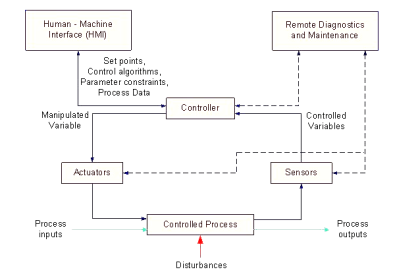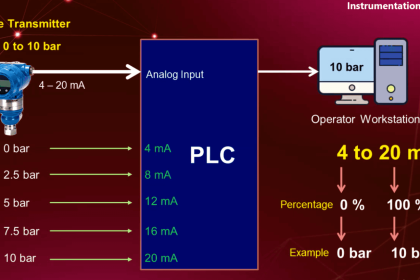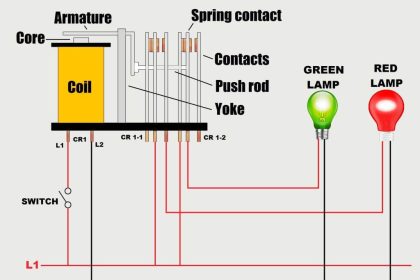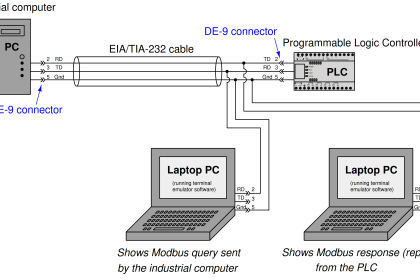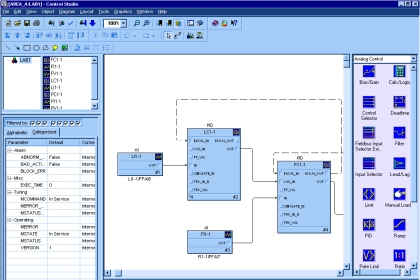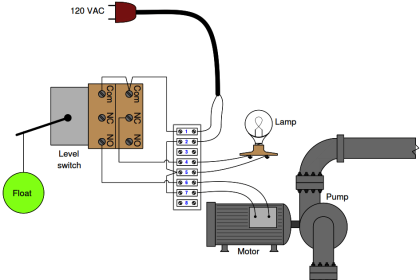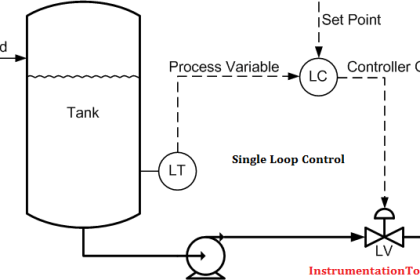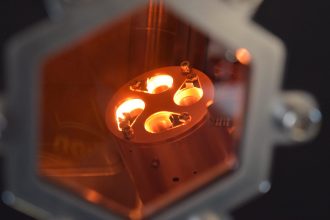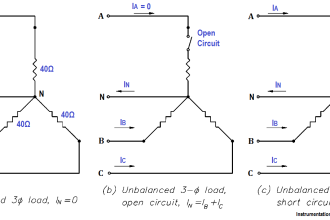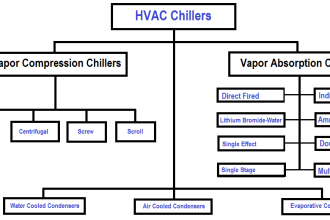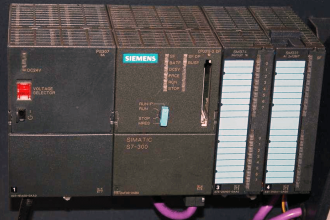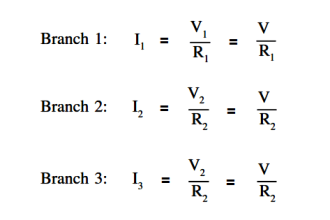A similar control system architecture to Direct Digital Control (DDC) – assigning a single microprocessor to the task of managing multiple control functions, with digital communication between the microprocessor units – is used for the management of systems which are by their very nature spread over wide geographical regions. Such systems are generally referred to as SCADA, which is an acronym standing for Supervisory Control And Data Acquisition.
The typical SCADA system consists of multiple Remote Terminal Unit (RTU) devices connected to process transmitters and final control elements, implementing basic control functions such as motor start/stop and PID loop control.
These RTU devices communicate digitally to a Master Terminal Unit (MTU) device at a central location where human operators may monitor the process and issue commands.
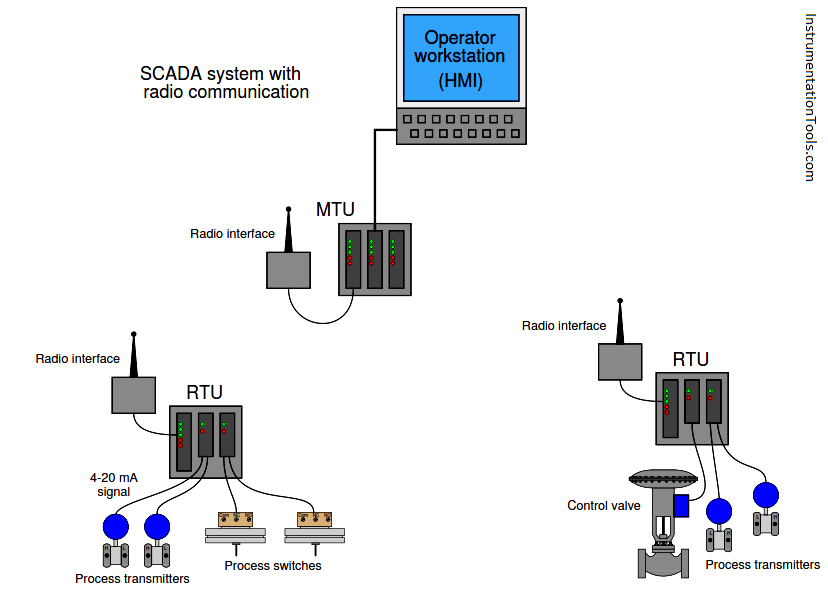
A photograph of an RTU “rack” operating at a large electric power substation is shown here:
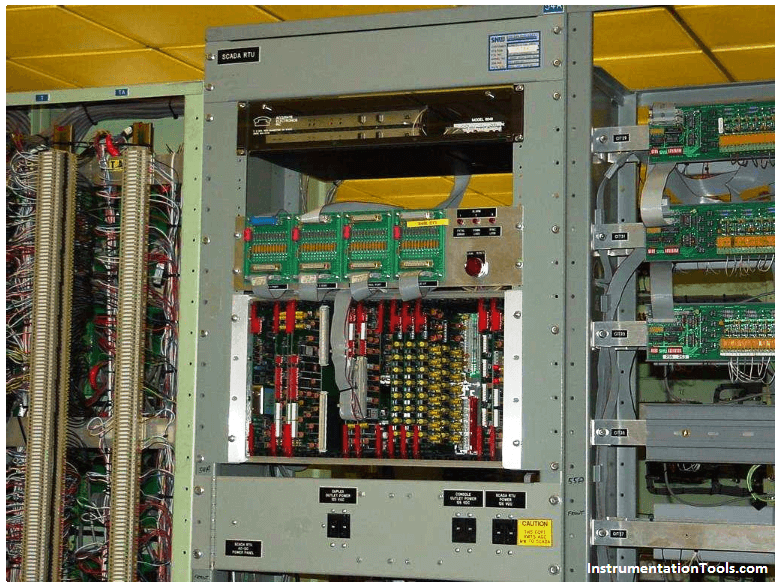
Some RTU hardware, such as the substation monitoring system shown above, is custom manufactured for the application.
Other RTU hardware is more general in purpose, intended for the monitoring and control of natural gas and oil production wells, but applicable to other applications as well.
The Fisher ROC 800 – shown in the photograph below – is an example of an RTU designed to operate with a minimum of electrical power, so that a single solar panel and battery will be sufficient for year-round operation in remote environments.
The particular unit shown is installed in a natural gas metering station, where is monitors gas pressure, temperature, and flow rate, and also controls the injection of an “odorizing” compound into the gas to give it a bad smell:

Standard programmable logic controllers (PLCs) are ideal candidates for use as RTU devices. Modern PLCs have all the I/O, networking, and control algorithm capability necessary to function as remote terminal units.
Commercially available Human-Machine Interface (HMI) software allowing personal computers to display PLC variable values potentially turns every PC into a Master Terminal Unit (MTU) where operators can view process variables, change setpoints, and issue other commands for controlling the process.
A photograph of such HMI software used to monitor a SCADA system for a set of natural gas compressors is shown here:
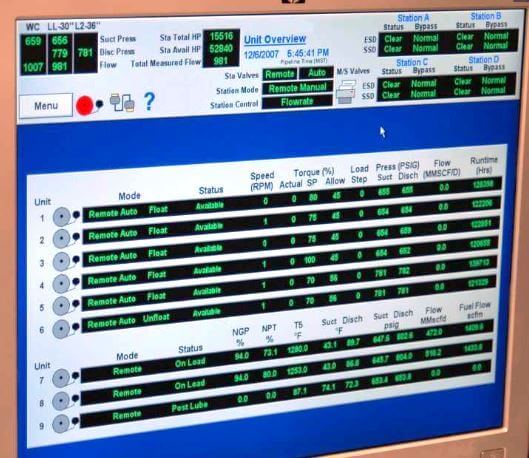
Another photograph of a similar system used to monitor and control drinking water reservoirs for a city is shown here:
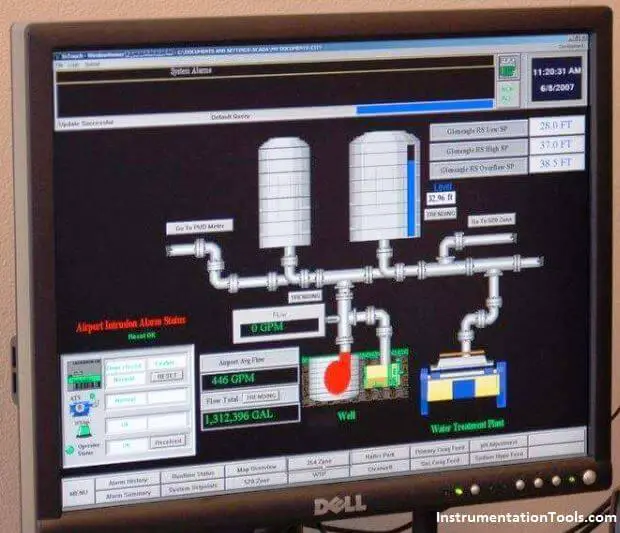
A concept closely related to SCADA is that of telemetry, the word literally meaning “distance measuring” (i.e. measuring something over a distance).
The acronym SCADA, by containing the word “control,” implies two-way communication (measurement and control) between the master location and the remote location. In applications where the flow of information is strictly one-way (simplex) from the remote location to the master location, “telemetry” is a more apt description.
Telemetry systems find wide application in scientific research. Seismographs, river and stream flowmeters, weather stations, and other remotely-located measurement instruments connected (usually by radio links) to some centralized data collection center are all examples of telemetry.
Any industrial measurement (-only) application spanning a large distance could likewise be classified as a telemetry system, although you will sometimes find the term “SCADA” applied even when the communication is simplex in nature.
Credits : Tony R. Kuphaldt – Creative Commons Attribution 4.0 License
